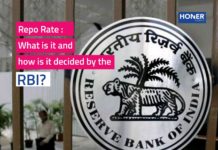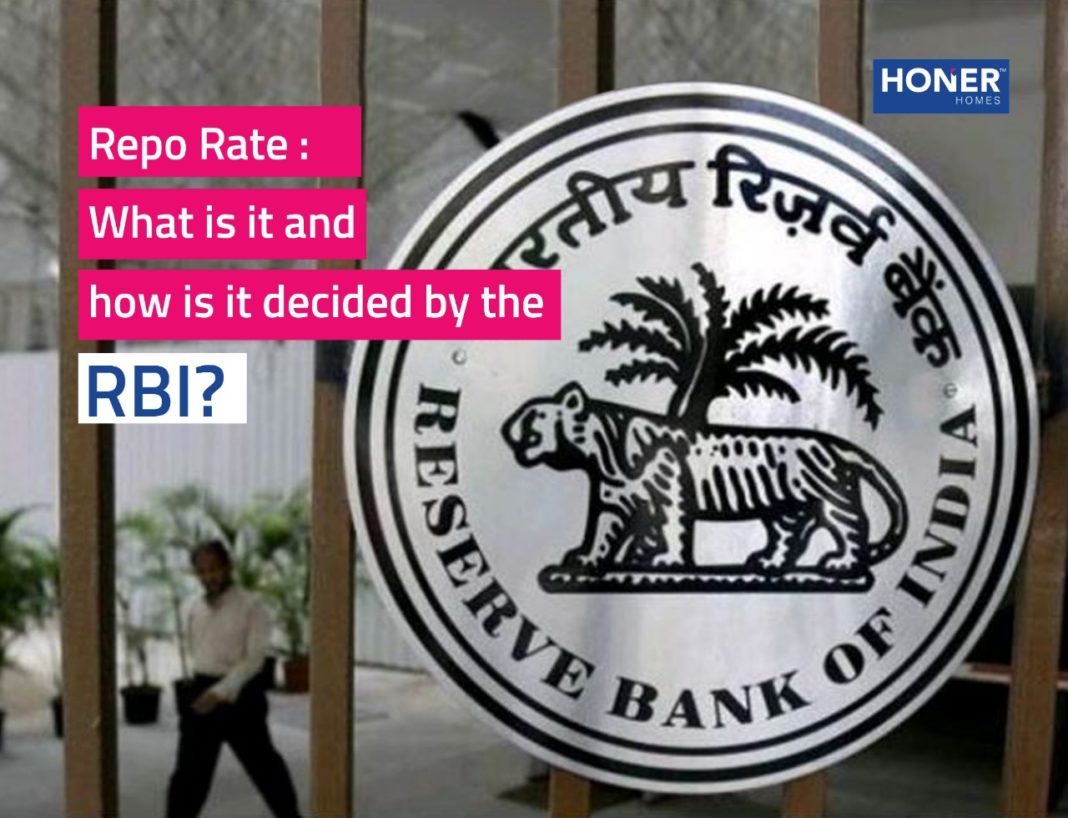What is Repo Rate?
Repo Rate is the rate at which the Reserve Bank of India lends money to other private or small-scale banks, government banks and financial institutions. The repo rate has a proportional relation to the rate at which the bank can acquire money. A reduced repo rate means that the bank can get money at a lower rate and vice-versa. But what is the implication of repo rate to the common public or a customer? We’ll read that in our next blog but at present let us understand how the RBI decides on the repo rate?
The Reserve Bank of India is the central bank in India and a large portion of the economic decisions of the country is managed by the RBI. Why? Because it is a part of their job profile to ‘control the cash in the system’. And to manage the cash flow in the country, they set up certain rules and regulations.
What are the rules set by the RBI to lend money to the banks?
The RBI puts forth reserve requirements for the banks and repo rates before authorising to lend money.
What is meant by reserve requirements?
A bank or a financial institution is authorised to get money from RBI only if they maintain a CRR (Cash Reserve Ratio) of 4% and an SLR (Statutory Liquidity Ratio) of 21%. For example, for every Rs.100/- that is in possession of the bank, it must give for safe-keeping Rs.4/- in hot cash and Rs.21/- as mostly investment in government bonds to the RBI. This total amount of Rs.25/- acts as a guarantee of sorts in case the bank collapses. This amount is nothing but a mortgage to be paid by the banks to the RBI to acquire money.
How Repo Rate holds importance here?
Here is an example to make you understand the concept of repo rate.
A certain XYZ bank has a total deposit of Rs.100 and after paying the mortgage of Rs.25 to the RBI, the remaining Rs.75 is lent to the customer as a loan. However, there is still demand for loan from the customer while the bank has run out of money. How will the bank satisfy customer interest? Well, the bank approaches the RBI once again to borrow another amount of Rs.50 and gives back Rs.12.50 by way of maintaining the CRR and SLR. The bank uses the remaining Rs.37.50 to lend to the customer. Now the RBI has an unlimited amount of money since it mints money and can never run out of cash, unlike a bank. So the RBI makes an agreement and offers the bank to purchase government bonds for SLR requirements with a condition. The bank (at a future date) has to repurchase the agreement from RBI at Rs.50 + 5.75% interest rate/annum while the RBI will repurchase its Government Bonds from the bank at a rate of 5.5% per annum.
The Repo Agreement is the first half of the agreement where the bank repurchases the agreement from the RBI and the Reverse Repo Agreement is the part where RBI repurchases its Government Bonds from the bank.
So the Repo Rate is always a little higher than the Reverse Repo Rate. Before taking a call on how to decide the Repo Rate, the RBI studies thoroughly factors such as the current trends on inflation, fiscal projections and fiscal deficit.
Who takes a call on the decision of the Repo Rate?
A five-member team of the Apex bank consisting of both RBI officials and external experts takes the onus on deciding the Repo Rate, a number that affect billions. The Appointments Committee of the Cabinet decides on the external names.
Why does the Repo Rate matter?
Now that you have understood how the repo works, in the banking system, let us get into the details of the importance of the 5.75% repo rate. The RBI does a policy review every two months and modifies the Repo, CRR, SLR, MSF rates.
The RBI has announced a 25 bps (basis points) rate cut recently and the current Repo Rate stands at 5.75%, a drop from 6.00%. This means that the bank can now borrow more from RBI at a lesser interest rate. This, in turn, will enable the bank to lend more money to the general public. More cash in the hands of the public means an increase in the purchase of goods and services. Higher spending and demand leads to inflation that affects the general public negatively. In such circumstances, the RBI will decide to intervene one more time and increase the Repo Rate which will lead to recession. This is a vicious cycle that the Monetary Policy Committee (MPC) observes closely and takes a decision on announcing the Repo Rate.
Repo Rate is therefore a very important factor when it comes to a loan borrower. Recently, RBI had announced a slash in the repo rate and has also instructed banks to accordingly lower the loan rate for all new and existing loan borrowers. In our next blog, we will find out more about the reduced repo rate and how it will affect the loan borrowers.








































